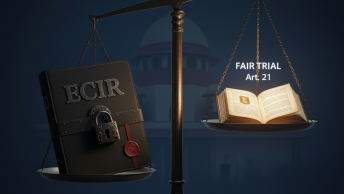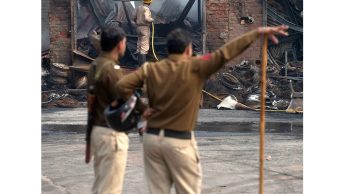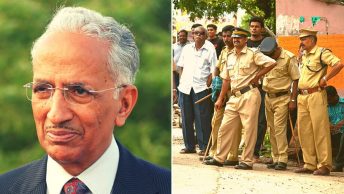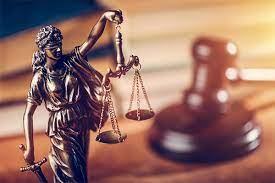(As part of our blog round-table book discussion on Jinee Lokaneeta’s The Truth Machines: Policing, Violence, and Scientific Interrogations in India, this is the response by Abhinav Sekhri. The introductory post and the links for the other responses can be found here)
The Truth Machines by Jinee Lokaneeta has stepped in to fill a serious breach in existing literature on criminal procedure in India. Its approach in focusing on micro-level issues and then linking them to a set of larger concerns is exactly what has been lacking in existing critical commentary about the Indian criminal justice system, which has insufficiently engaged with specific issues in its pursuit of larger systemic critiques. That the book picks the site of India’s burgeoning forensic science setup as the primary subject of its attentions only adds to its value, for to the best of my knowledge there is no existing study of this increasingly important site in India’s criminal justice architecture.
There are many, many strands of thought that I would like to pull and muse about from the book. Here, I pick two themes that spoke volumes to me, coming as I was from the perspective of a practitioner who harbours a strong interest in criminal justice reform. While I do not take it up specifically, I must also highlight the book’s engagement with the notion of contingency, as opposed to assumptions of unity and cohesion, as particularly useful for understanding aspects of how certain facets of the criminal justice architecture have developed and continue to operate today.
The Myth of “Scientific” Investigations
In a handbook on criminal investigations in India published in 1901, Hans Gross expressed a surprise at just how frequently suspects confessed to the police, in spite of the fact that Indian law carried a relatively strong set of procedural protections designed to dissuade from over-reliance upon confessions as a means of evidence. This legal complex was a development to concerns about police officers brutalising suspects in search of evidence, officially aired first in 1855. Another official review in 1902 confirmed that the legal complex had not managed to change repressive police practices, and although we are in 2020, things have not changed very much.
The desperation caused by these brutish, and brutal, modes of investigation to secure the elusive confession has often led to an almost messianic belief in the concept of “scientific investigations”. The Truth Machines seriously engages with this fascination in the history of India’s criminal justice system, which policymakers have hoped will replace the “third degree” methods of the police and reform investigations.
It is fair to state that the book convincingly tears up this hopeful logic that both courts and policymakers in India somehow continue to subscribe to with alarming levels of alacrity. A vivid and graphic description of the administration of narco-analysis, brain mapping, and polygraph tests — the eponymous truth machines of the book — shows exactly what the problem is: These scientific investigations are spiritual siblings of the police torture they sought to replace, with their focus also on obtaining confessions as a source of evidence, and their methods reliant upon getting to the mind by using the body. As a result, the doctor and the police end up working in tandem towards the same goal, ultimately securing the same unreliable evidence, and worsening the condition of the suspect.
Historically, scientific investigation was a phrase adopted to refer to methods where the reliability of evidence was impeccable. The reason for this was excluding the accused as being an active part of the process. In case of the truth machines, though, this logic is flipped on its head, which makes one wonder if these methods can even be considered as scientific in the first place. Alas, as the book details, courts in India have given very little attention to this question. Even when issues regarding the truth machines reached the Indian Supreme Court, it barely engaged with questions about whether or not the methods themselves could be classified as scientific on a survey of peer-reviewed material, with the focus entirely upon the fruits of these experiments being legally admissible or not. The consequences of this failure to question the validity of the techniques themselves are spelt out in the book very clearly — a focus on evidentiary value means investigative use of narco-analysis and other tests remains very popular.
While the book does not explicitly make this categorisation, I could not help but think about how the book also helps give us some nuance on the “scientific investigations” that the Indian criminal justice system is so fond of. Maybe we should reserve the tag, and the endorsement, for methods that do not encourage using the person herself as a source of evidence. Would that choice not allow for an easy fit with the existing constitutional framework in India, and also go some ways towards addressing the human rights concerns.
A Different Kind of Checklist Manifesto
Dr. Atul Gawande wrote a wonderful book titled “The Checklist Manifesto”, arguing that a simple method of introducing checklists helped drastically reduce errors in surgery. The Truth Machines exposes us to a very different kind of checklist manifesto — legal procedure in the hands of the police.
It is fairly standard to see legal systems use legal procedure as a means to redress substantive problems, especially where the substantive issues are a product of power imbalances. This is one simple reason for why it makes sense to have procedures that safeguard the interests of suspects inside a police station. But, at the same time, procedural law can only go so far — a position that was very forcefully argued some time ago by the late Prof. Stuntz in context of the Fourth and Fifth Amendments in the U.S. context.
The Truth Machines highlights similar problems in the Indian context. Concerted efforts by human rights activists led to legal reform in the form of new procedural safeguards such as securing consent of suspects. This is on top of the pre-existing safeguards that the law had, such as judicial involvement at the stages of pre-trial custody as well as recording confessions to inquire into the conditions of the suspect and prevent abuse of power. But ultimately, for these safeguards to be meaningful, they have to be meaningfully applied by the actors. This is, sadly, often not the case in the Indian criminal justice system. As The Truth Machines notes while discussing procedures such as remands to custody, compliance with procedure often gets reduced to a matter of ticking all boxes in a checklist, rather than actually securing the substantive interests that the law was designed to protect.
Interactions with defence lawyers about various issues are a feature of The Truth Machines. However, it does not fully engage with the issue of what role defence lawyers play within the investigative process itself; an issue which I believe has a lot to bear on how criminal procedure is implemented. It is often believed that defence lawyers work towards redressing the power imbalance between the accused and the state. This is considered especially true in adversarial systems of justice. In India’s purportedly adversarial system of criminal justice, however, defence lawyers barely play a role during an investigative process. Rather, the police are supposed to uncover the “truth”, a quintessentially inquisitorial approach to procedure.
All too often, the presence of defence lawyers into any aspect of the investigation is a contingency, realised by virtue of a court’s order passed in a particular case, as opposed to being the result of structural choices, which means their rights and duties are never clearly defined. As a result, we find ourselves in a system where it is not even clearly laid down that a defence lawyer has the right to meet her client when she is detained in police custody — each case ends up needing a court order which then becomes a separate battle, and judges might end up providing different formulations of how legal interviews ought to happen in terms of time etc. At the same time, none of these roles are clearly defined as duties that the defence lawyer owes her client.
Perhaps the searing clarity with which The Truth Machines lays bare the futility of enacting thick layers of procedural safeguards might end up helping innovate activism and foster a more diversified approach which goes beyond merely adding to a checklist but making it more effective in practice. Of course, there must be greater accountability for police, judges, and other actors such as forensic experts, but in addition to these actors any movement for reform must consider the role of defence lawyers in the process.
A caveat [Ed Note: This Response was received when the only version was available here, which was before the Indian edition of the book was launched, available here.]
This review gave me an excuse to read The Truth Machines for a second time, with the first read coming some months ago thanks to the book being made available for free till June 30. However, without this chance, there is no way that an ordinary lawyer such as myself could have afforded a copy of the book and appreciated its critique of systems that I engage with on a daily basis. Alas, this is too often the case with academic publications. Much like the book itself discusses structures of power, its import may remain confined because of such structures as well.







